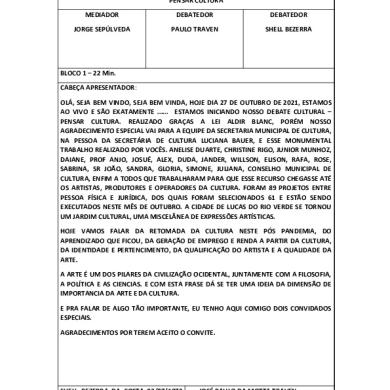* The preview only shows a few pages of manuals at random. You can get the complete content by filling out the form below.
Description
SAINT FRANCIS UNIVERSITY Loretto, PA 15940 EDUCATION DEPARTMENT LESSON PLAN Format Student Teacher Dom Novella Subject Environmental Science Time Needed for Lesson 46 minutes
Grade 12th Grade Lesson Concept
Do We Want Wapiti Here? (Day 3)
PA STANDARD(S) (Write out standards): ● 4.1.7.E: Identify factors that contribute to change in natural and human-made systems. BIG IDEAS/ESSENTIAL QUESTIONS: ● Student research, discussion, communication, and debating skills are important skills for their future development and education. ● Why is student research, discussion, and communication important for development? ● Why should students do research for multiple sides of one argument/debate? ELIGIBLE CONTENT: ● S7. B.3.2.1: Identify and describe factors that cause and/or influence changes in populations (e.g., deforestation, disease, land use, natural disaster, invasive species). ● S7. B.3.2.3: Describe how human interactions with the environment impact an ecosystem (e.g., road construction, pollution, urban development, dam building/removal). OBJECTIVE(S) (Be sure to include all four parts): ● During the debate, 12th grade Environmental Students will orally express either the problems or benefits faced with reintroducing elk into a town setting with 100% participation. MATERIALS: ● Role Cards (one per student) ● Chromebooks ● Debate notes ACTIVITIES (There are three sections here):
OPENING (Introduction, purpose, hook) (5 minutes): ● Once the students get settled into the class the students will list at least two rules they will follow throughout the debate. ● Students will get 5 minutes to meet with their groups and finish up any points they want to make during the debate. BODY (Bulleted step by step/differentiation must be included) (38 minutes) ● We will hold our town meeting for most of the class period. ● Each group will take turns presenting their side of the debate and attempting to persuade the other side into changing their opinion to fit theirs. ● The teacher will be the mediator between the two groups and will “lead” the debate. ● One side will present their side of the question followed by the opposing side. ● Experts may be asked to state some facts or present some data regarding the statement. The media will sit next to the moderator and may ask the different sides questions regarding their statements as they please. ● We will continue to debate this question until the end of the period. CLOSURE (Wrap up and brief summary): (2 minutes): ● The students will determine the importance of this debate. o It is not important that the class comes to a conclusion about the question, but rather understand the complexity of the problems involved in sharing habitat with wildlife. ● With the last few minutes of class, the teacher will ask the students to write a summary of the arguments for and against the reintroduction of elk into Patton, PA. ● Students will list at least 5 viewpoints from their argument and at least 3 viewpoints from the opposition. o This will be handed in on Monday for a form of summative assessment. ACCOMMODATIONS/MODIFICATIONS: ● If a student needs assistance with reading and researching for their topic, then they will have a teaching aid there with them to ensure progress is made with their research. ● If students need some sort of visual or audio aid, then the teacher will provide them with that aid. ASSESSMENT: ● Summative Assessment: Students will write a summary of the arguments for and against the reintroduction of elk in Patton, PA (10 points). SELF-ASSESSMENT/REFLECTION: (Complete this section if you have taught this lesson to peers or in clinical placement): After completing this lesson, there were more benefits than non-benefits. The students were engaged with this lesson, especially throughout this three day lesson. Students seemed to enjoy conducting their own research, “teaching” themselves, and developing a strategy for their debate team. All of these aspects included some form of student engagement. Flexibility within the lesson was also important. I was not going to allow rebuttals, but the atmosphere and actions of the students seemed to make it alright to allow rebuttals to occur. This sparked more debate and thus more student engagement and interaction. Some things I still need to work
on is not giving the students answers when I ask them a question. They need to reflect on the question and then develop their own response. I tend to give the answers to them which reduces their attention to the topic.




